A 3-year-old girl was admitted with a diagnosis of acute lymphocytic leukemia. After admission, she was treated by administration of packed red cells, 2 units of platelets, IV fluids, and allopurinol. On the second hospital day, chemotherapy was begun, using IV vincristine and prednisone and intrathecal injections of methotrexate, prednisone, and cytosine arabinoside. She was discharged for home care 5 days later. She was continued on prednisone and allopurinol at home. She received additional chemotherapy 1 month later (11/1) and again on 11/14. On 12/6, she was readmitted because she had painful sores in her mouth and was unable to eat. LABORATORY RESULTS 10/1 10/2 10/3 10/4 11/14 12/6 6/20 Urea N 12.0 ** ** 15 4.0 2.0 ** (mg/dL) Creatinine 0.7 (mg/dL) ** ** 1.0 0.7 ** 0.7 Uric acid 12.0 9.2 4.0 1.9 2.3 ** 3.1 (mg/dL) WBC 56,300 2,800 3,700 ** ** 3,700 ** (mm³) **indicates test not performed Questions: 1. How would you explain the significant elevations of uric acid on admission? 2. Which two factors are responsible for the normal concentrations of uric acid seen in subsequent admissions? 3. Which is the most likely cause of the abnormally low concentration of urea nitrogen observed on 12/6? Which other laboratory test would confirm your suspicions?
A 3-year-old girl was admitted with a diagnosis of acute lymphocytic leukemia. After admission, she was treated by administration of packed red cells, 2 units of platelets, IV fluids, and allopurinol. On the second hospital day, chemotherapy was begun, using IV vincristine and prednisone and intrathecal injections of methotrexate, prednisone, and cytosine arabinoside. She was discharged for home care 5 days later. She was continued on prednisone and allopurinol at home. She received additional chemotherapy 1 month later (11/1) and again on 11/14. On 12/6, she was readmitted because she had painful sores in her mouth and was unable to eat. LABORATORY RESULTS 10/1 10/2 10/3 10/4 11/14 12/6 6/20 Urea N 12.0 ** ** 15 4.0 2.0 ** (mg/dL) Creatinine 0.7 (mg/dL) ** ** 1.0 0.7 ** 0.7 Uric acid 12.0 9.2 4.0 1.9 2.3 ** 3.1 (mg/dL) WBC 56,300 2,800 3,700 ** ** 3,700 ** (mm³) **indicates test not performed Questions: 1. How would you explain the significant elevations of uric acid on admission? 2. Which two factors are responsible for the normal concentrations of uric acid seen in subsequent admissions? 3. Which is the most likely cause of the abnormally low concentration of urea nitrogen observed on 12/6? Which other laboratory test would confirm your suspicions?
Phlebotomy Essentials
6th Edition
ISBN:9781451194524
Author:Ruth McCall, Cathee M. Tankersley MT(ASCP)
Publisher:Ruth McCall, Cathee M. Tankersley MT(ASCP)
Chapter1: Phlebotomy: Past And Present And The Healthcare Setting
Section: Chapter Questions
Problem 1SRQ
Related questions
Question

Transcribed Image Text:A 3-year-old girl was admitted with a diagnosis of acute lymphocytic leukemia. After admission,
she was treated by administration of packed red cells, 2 units of platelets, IV fluids, and allopurinol.
On the second hospital day, chemotherapy was begun, using IV vincristine and prednisone and
intrathecal injections of methotrexate, prednisone, and cytosine arabinoside. She was discharged
for home care 5 days later. She was continued on prednisone and allopurinol at home. She
received additional chemotherapy 1 month later (11/1) and again on 11/14. On 12/6, she was
readmitted because she had painful sores in her mouth and was unable to eat.
LABORATORY RESULTS
10/1
10/2
10/3
10/4
11/14
12/6
6/20
Urea N
12.0
**
**
15
4.0
2.0
**
(mg/dL)
Creatinine 0.7
(mg/dL)
0.7
0.7
**
**
1.0
**
Uric acid
(mg/dL)
9.2
**
12.0
4.0
1.9
2.3
3.1
WBC
56,300
3,700
**
**
**
2,800
3,700
(mm2)
**indicates test not performed
Questions:
1. How would you explain the significant elevations of uric acid on admission?
2. Which two factors are responsible for the normal concentrations of uric acid seen in subsequent
admissions?
3. Which is the most likely cause of the abnormally low concentration of urea nitrogen observed on
12/6? Which other laboratory test would confirm your suspicions?
Expert Solution
This question has been solved!
Explore an expertly crafted, step-by-step solution for a thorough understanding of key concepts.
This is a popular solution!
Trending now
This is a popular solution!
Step by step
Solved in 2 steps

Recommended textbooks for you
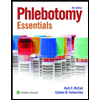
Phlebotomy Essentials
Nursing
ISBN:
9781451194524
Author:
Ruth McCall, Cathee M. Tankersley MT(ASCP)
Publisher:
JONES+BARTLETT PUBLISHERS, INC.
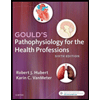
Gould's Pathophysiology for the Health Profession…
Nursing
ISBN:
9780323414425
Author:
Robert J Hubert BS
Publisher:
Saunders

Fundamentals Of Nursing
Nursing
ISBN:
9781496362179
Author:
Taylor, Carol (carol R.), LYNN, Pamela (pamela Barbara), Bartlett, Jennifer L.
Publisher:
Wolters Kluwer,

Phlebotomy Essentials
Nursing
ISBN:
9781451194524
Author:
Ruth McCall, Cathee M. Tankersley MT(ASCP)
Publisher:
JONES+BARTLETT PUBLISHERS, INC.

Gould's Pathophysiology for the Health Profession…
Nursing
ISBN:
9780323414425
Author:
Robert J Hubert BS
Publisher:
Saunders

Fundamentals Of Nursing
Nursing
ISBN:
9781496362179
Author:
Taylor, Carol (carol R.), LYNN, Pamela (pamela Barbara), Bartlett, Jennifer L.
Publisher:
Wolters Kluwer,
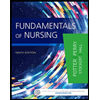
Fundamentals of Nursing, 9e
Nursing
ISBN:
9780323327404
Author:
Patricia A. Potter RN MSN PhD FAAN, Anne Griffin Perry RN EdD FAAN, Patricia Stockert RN BSN MS PhD, Amy Hall RN BSN MS PhD CNE
Publisher:
Elsevier Science
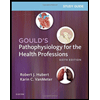
Study Guide for Gould's Pathophysiology for the H…
Nursing
ISBN:
9780323414142
Author:
Hubert BS, Robert J; VanMeter PhD, Karin C.
Publisher:
Saunders
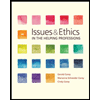
Issues and Ethics in the Helping Professions (Min…
Nursing
ISBN:
9781337406291
Author:
Gerald Corey, Marianne Schneider Corey, Cindy Corey
Publisher:
Cengage Learning